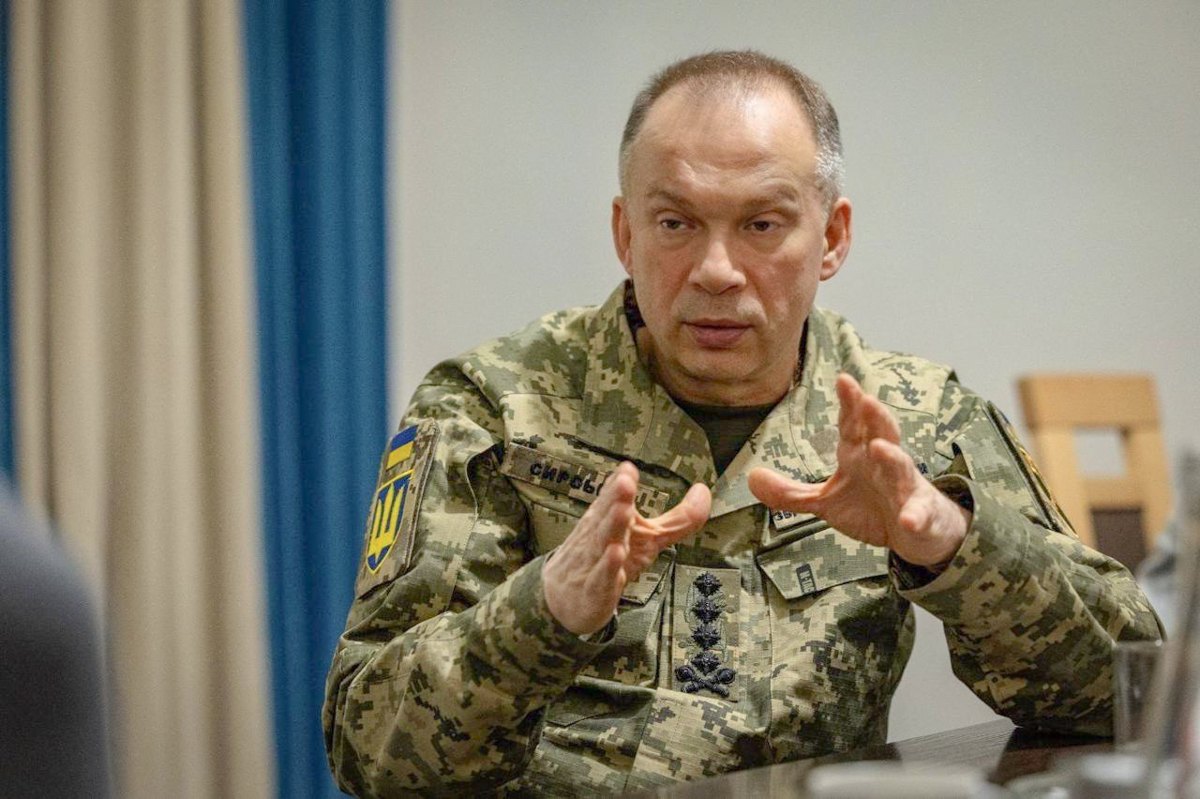
‘The offensive on Sumy and Kharkiv regions has actually already begun’
Last summer, in an interview with The Guardian, you said that Russia had achieved small tactical victories, but still had no significant progress. Although the enemy is willing to sacrifice huge numbers of infantry for its tactical victories. Has anything changed since then?
The situation has not changed dramatically. The enemy continues its strategic offensive to seize our territory, defeat our troops, advance into the depths, and seeks to completely seize Donetsk and Luhansk regions, as well as parts of Kherson and Zaporizhzhya regions, and create a buffer zone in Kharkiv, Sumy, and Chernihiv regions.
It is pursuing the goals or trying to fulfil the tasks it has been assigned.
And they are not going to stop, apparently...
You can see that despite all the negotiations, we are only seeing an increase in the intensity of the offensive.
President Volodymyr Zelenskyy said in an interview with Le Figaro that Russia is preparing for a new offensive in Sumy and Kharkiv regions.
I can say that the president is absolutely right and this offensive has actually already begun.
Because for several days now, almost a week, we have seen the number of enemy offensives on all major directions almost double.
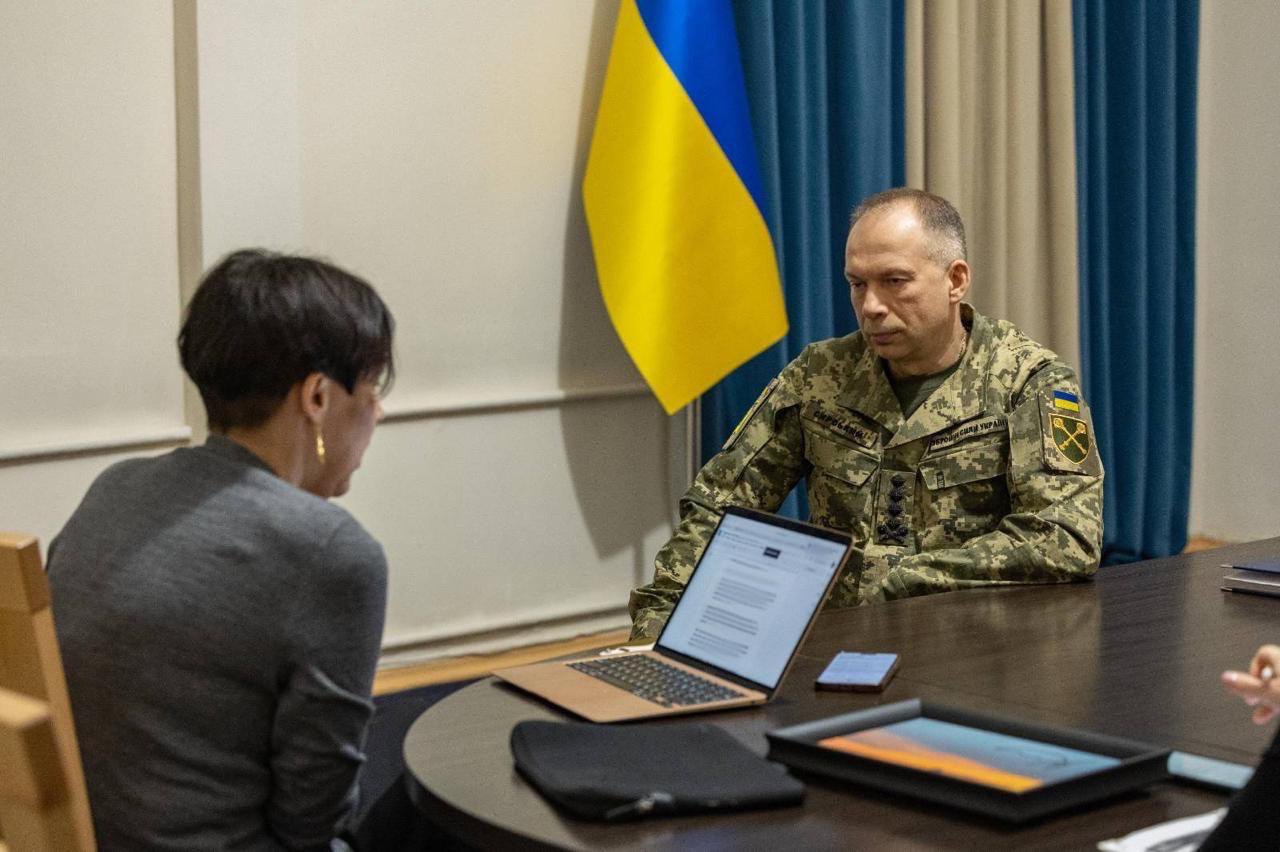
This autumn, Belarus will host a large-scale exercise, Zapad 2025, jointly with the Russian armed forces. Could they also be part of preparations for a new offensive against Ukraine from the territory of Belarus?
All exercises have a purpose. And one of these goals is the covert creation of offensive troop groups. That is, the appearance of exercises is the most acceptable way to relocate troops, concentrate them in a certain direction and create a grouping of troops.
In fact, this is how it started in 2022. You remember that the grouping was initially created, it conducted exercises, and we all hoped that they would end and that Russian troops would return to their territory.
But when it was decided that these exercises would continue, it became obvious to me that this was it.
Are you expecting the same thing in autumn?
Not that I expect it. But we must take this factor into account.
According to your information, the ratio of artillery at the front is now one to two in favour of the enemy, while a year ago it was one to ten. So we can practically talk about parity, given that we operate more advanced means of destruction?
We mean the ratio of ammunition.
We can say that we have conducted a series of very successful strikes as part of the deepstrike operation (strikes against the enemy on its territory - S.K.). If you remember, we hit several arsenals. And after that, the number of artillery shells used by the enemy per day almost halved.
They used to spend about 40,000 or more rounds of ammunition every day. And after our strikes, the figure changed dramatically and is now hovering around 23, and now it has slightly crept up to 27-28 thousand.
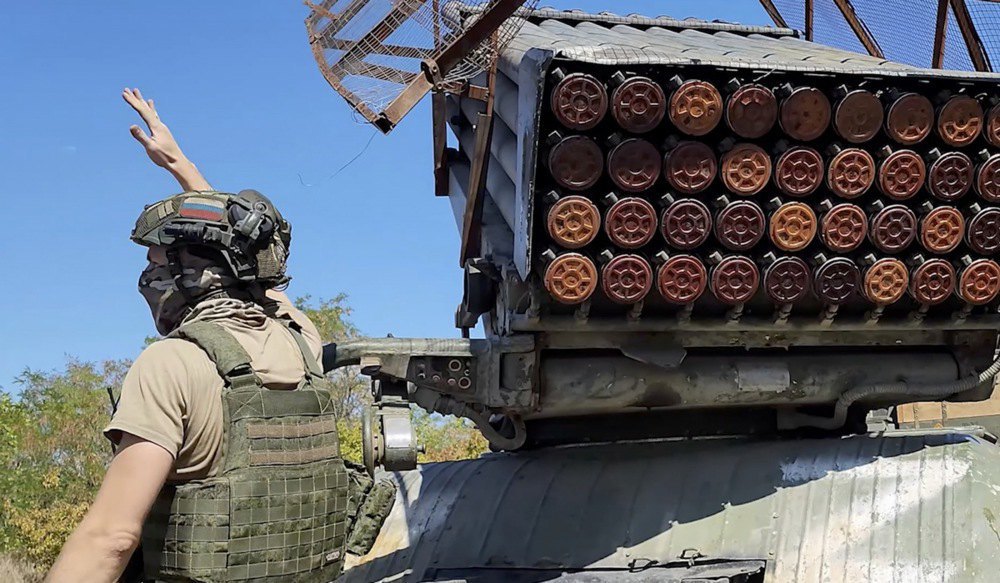
What is the reason for this growth?
Perhaps with the supply of ammunition from North Korea. Perhaps from Iran. Perhaps it is due to an increase in domestic production.
The development of high-tech weapon systems does not require a large number of personnel to maintain them. The use of such systems on a massive scale to a depth of 30-300 km will shift the burden of war from the front line to the occupied territory. The question is: is our General Staff creating such a doctrine? Will the development of high-tech systems reduce the need for mobilisation?
Firstly, this is indeed one of the main areas of our work. We have created the world's first fleshless forces. Russia follows our experience, having also announced the creation of its own unmanned forces at the end of last year and is now actively building up and scaling up its units.
We continue to expand in this direction, increasing the number, scale and capabilities of deepstrike, or long-range strikes, and have already passed the 1,700 kilometre mark. On the one hand.
On the other hand, all our brigades are also increasing their unmanned component. This project has already covered dozens of brigades, so we are saving soldiers' lives. By increasing the technical component, we will be able to reduce the direct involvement of our servicemen in combat.
The effectiveness of drones depends on weather conditions, enemy electronic warfare performance and many other factors. Perhaps it makes sense to set a goal not only of a million drones, but also of millions of mines and shells that we can produce ourselves?
There is also growth in other areas. There can be no increase in the production of drones without an increase in the number of ammunition. These are interconnected processes.

Today we summed up the results with the commanders of unmanned units, unmanned brigades and regiments. We hold this event every month, and our intelligence is familiar with what is emerging in the field of unmanned systems: what are the latest types of UAVs, the latest electronic warfare and countermeasures. This process is so fast that virtually every month something changes: more powerful systems appear, the range of applications, for example, of electronic warfare equipment, and their operating procedures increase. This is such a technologically advanced industry, and we need to keep our edge here.
Question. Do our partners have the ability and/or means to change the strategic situation in our favour? And it's not just about weapons.
The support of our partners, of course, is crucial. Especially when the United States was helping us. Now the United States' assistance has decreased. And the main assistance comes from our partners in Europe.
But we must also rely on our own strength. And we have made progress in the production of artillery. Quite significant successes in electronic warfare. We are making progress - our partners are already studying our experience.
UAVs, again. There are so many models, types of different UAVs that strike the enemy at the tactical, operational and strategic levels.
So even if the US support stops completely, as it did for a short period not so long ago, we will, in principle, manage together with our partners?
Yes, of course. The support of our partners is essential, but we need to rely on our own strength.
How much time will it take for us to be able to rely on our own strength in terms of production capacity, without the support of our partners?
In my estimation, this process has moved forward very quickly over the past year. I think that this year will also give us a significant boost, because we have basically entered a kind of, let's say, afterburner mode of operation. And the situation itself requires us to exert all our strength. Everyone understands this.
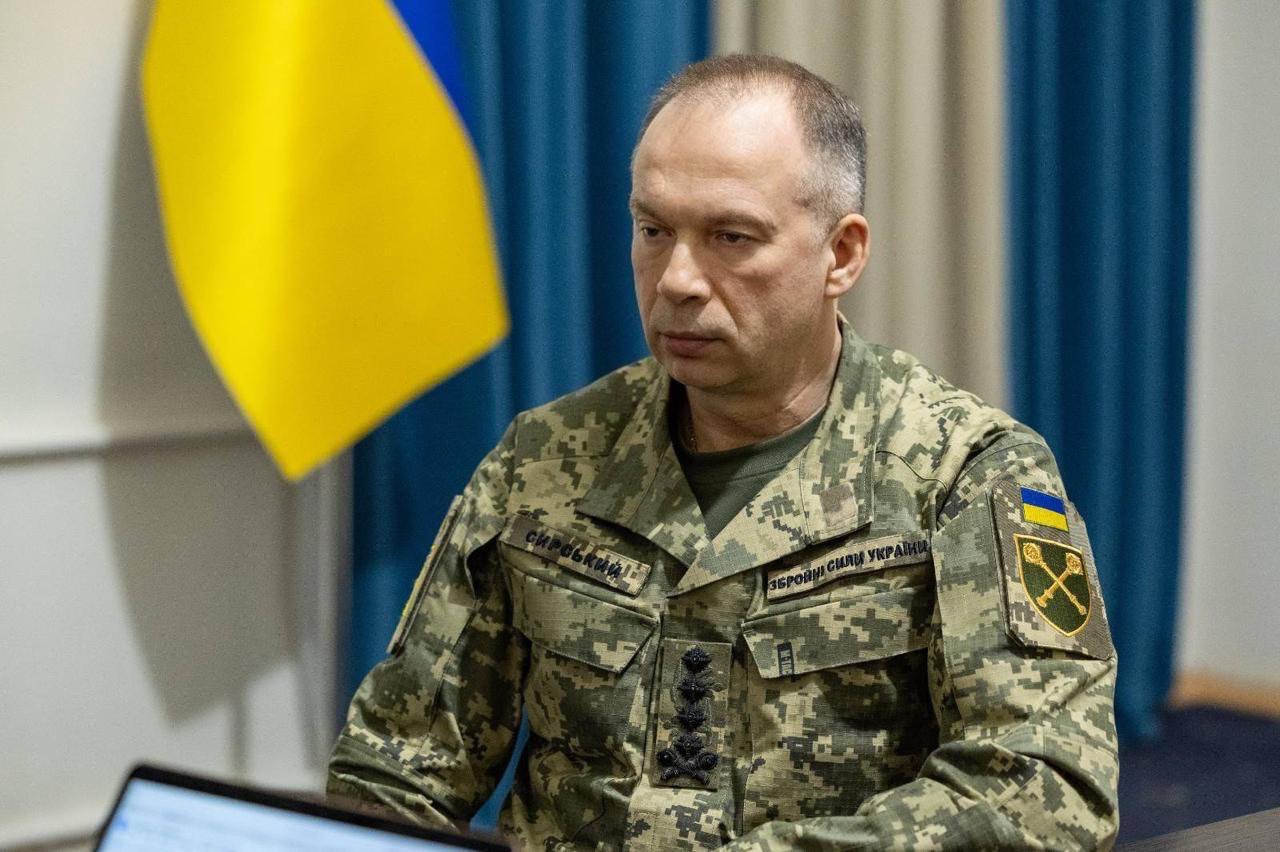
‘If we had five brigades, I think both Bakhmut and Soledar would have been liberated. And the enemy would have left there on their own.’
Speaking of partners, The New York Times recently published a resonant article about the cooperation between Ukraine and the United States during the Great War. In particular, it said that at the beginning, there was distrust between you and the Americans, and you allegedly even told US representatives: ‘We are at war with the Russians. You are not. Why should we listen to you?’. Did this episode really happen?
You know, I learnt a lot about what I allegedly said and what I did. I'm wondering who, let's just say, came up with it.
In the same text, The New York Times claims that on your initiative, the 2023 offensive plan was changed and instead of one direction of attack, the Defence Forces launched offensive actions in three directions at once. And this, according to the Americans, was allegedly the reason for the failure. Can you comment on this statement?
Every officer and general who took part in the fighting knows that this is not true at all.
Yes, we conducted an offensive south of Bakhmut. But we conducted the offensive with two brigades from the group. If we had five brigades, I think both Bakhmut and Soledar would have been liberated.
And the enemy would have withdrawn from them. Because the idea of this operation was to cut off the three main roads that provided logistical support to this group.
When we planned these actions, we realised that our forces were not enough. We have two brigades without additional ammunition. That is, within the limits of what we were supplied with to conduct normal operations in the normal mode. But we were counting on the unexpected, on the fact that we would break through the enemy's defences with such not so much adventurous as bold actions, given that they were not ready, not like, for example, in Zaporizhzhya. There, all the fortifications were in an ordinary field.
And so we expected to be able to advance and cut the road between Bakhmut and Horlivka. And then.
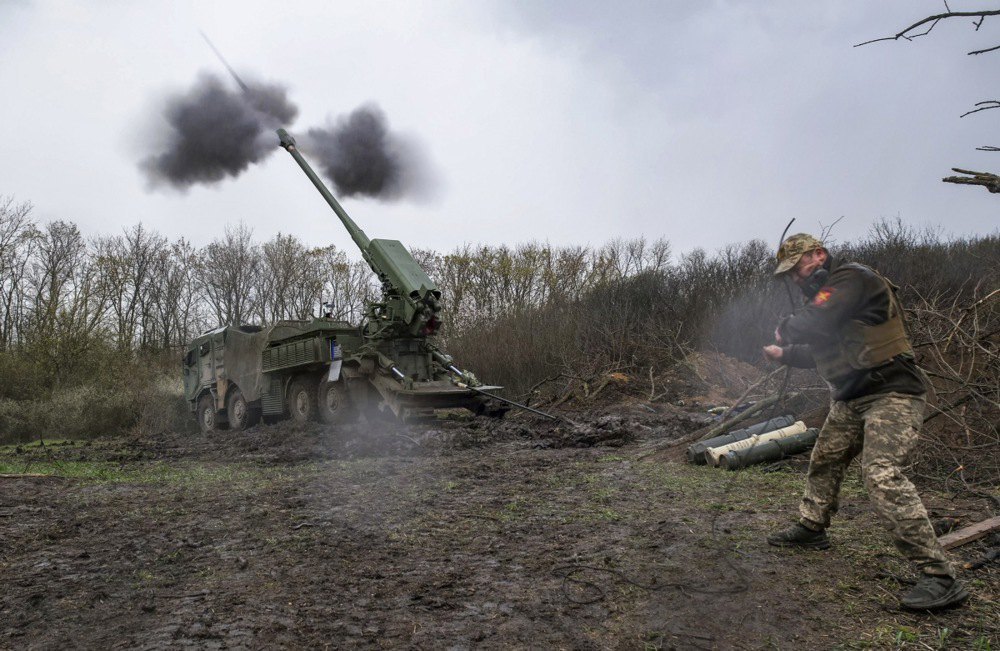
So, basically, these are three roads that provided logistical support to a group of 20,000 people. If we had managed to cut these routes, the enemy would have been forced to retreat. Otherwise, he would have fallen into a trap.
But this did not happen.
Unfortunately. We simply did not have enough forces and means.
As I conclude this section, I cannot help but recall Valeriy Zaluzhnyy's phrase from the summer of 23 that the situation at the front had reached a deadlock, when neither side could advance because they were equally technologically equipped, and this was reminiscent of the events of the First World War.
You can assess the correctness of this assessment yourself, because after that came the Kursk offensive. And in fact, it completely reproduced the offensive that took place in Kharkiv.
‘On the eve of the Kursk offensive, I literally toured all the units - I told everyone why we were going there and why we were here. Because there were commanders who asked if it was legal.’
President Volodymyr Zelenskyy has repeatedly said that the offensive in the Kursk Region has already fulfilled its task of preventing an offensive in the Sumy-Kharkiv Regions. The emphasis is on the word ‘already’.
If you remember, last summer the situation was critical for us - the enemy launched an offensive. Initially, he wanted to attack Kharkiv, but we managed to get ahead of him in his actions. The enemy did not expect us to have any reserves.
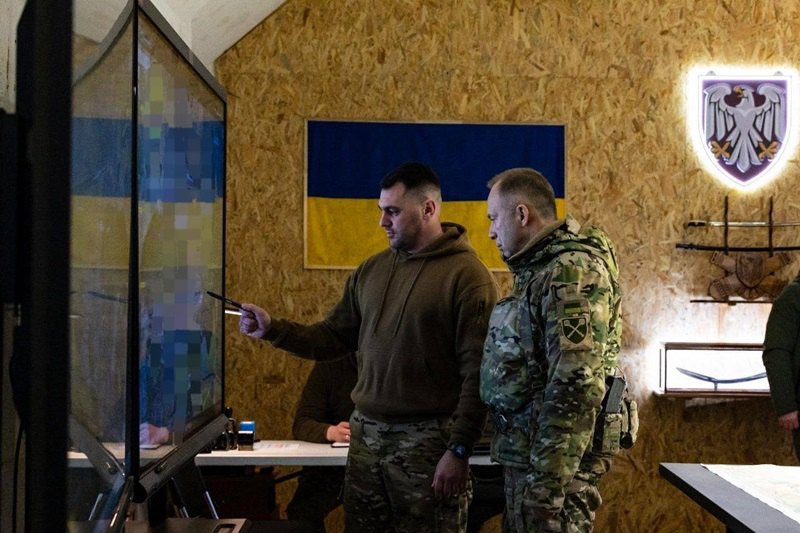
In general, the enemy's main idea was that they planned to launch this strategic offensive after the 44th Army Corps had been combat-coordinated. It formed the basis of this grouping. It was completely re-formed, that is, it was a new grouping. And the number of this group, as far as I remember, ranged from 140 to 160 thousand, which is a lot. They planned to attack in two directions - Kharkiv and Sumy.
When we began to move our units to the state border - and this corps (the 44th - S. K.) had not yet completed its combat coordination, its units were at training grounds - the Russian command, in response to our actions, which were unexpected for them, decided to attack with the forces they had. According to our data, it is about 46,000 in the Belgorod area and 23-26,000 in the Sumy direction.
Then, you know, the actions began, and they were generally unsuccessful, because the enemy got bogged down in Vovchansk. They advanced nine kilometres in the Liptsy area near Kharkiv, but then we managed to push them back two kilometres and the line actually stabilised.
The enemy suffered very heavy losses and gradually began to transfer those units that were preparing for the attack on Sumy to the Kharkiv direction. So they got involved and got bogged down. Thus, this offensive, let's say, failed.
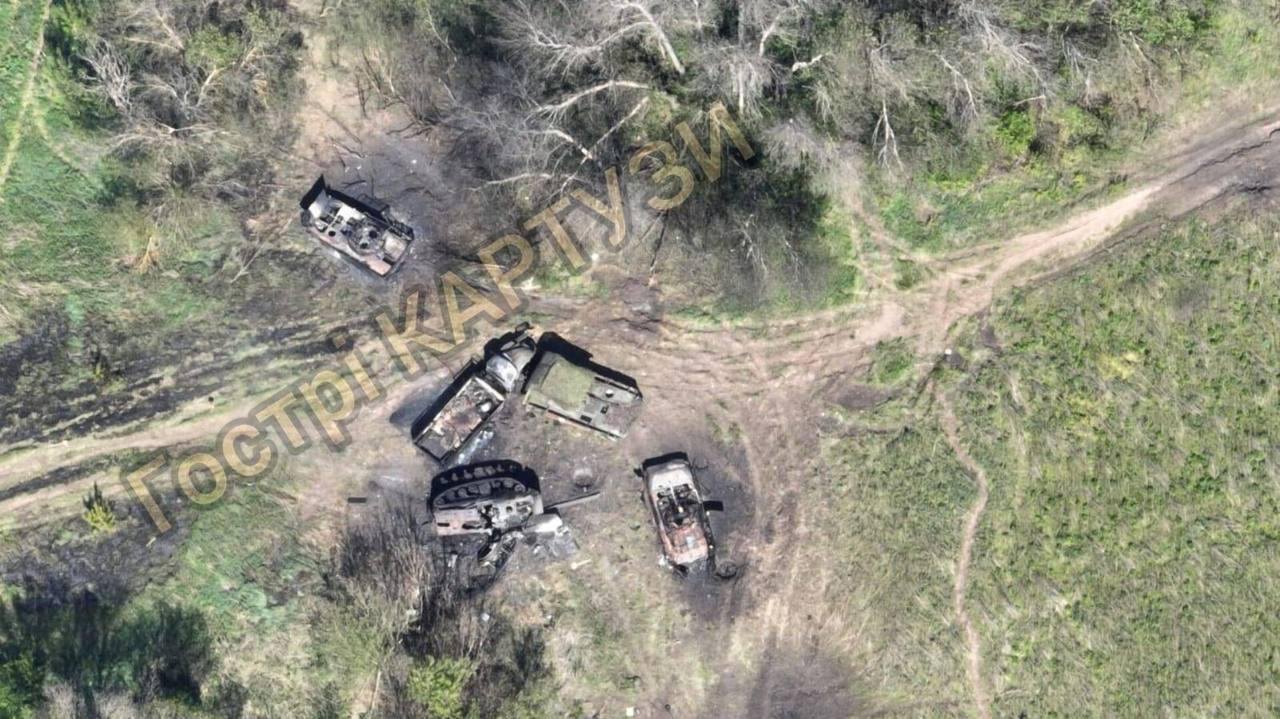
The situation was critical, and in these circumstances, we had to do something to weaken the enemy's onslaught as much as possible. That's when we came up with the idea of launching a counter-offensive where the enemy did not expect it and where they were weakest.
We studied the situation in detail and came to the conclusion that exactly where the enemy planned to attack Sumy region, as he had moved all his units to the Kharkiv direction, he had only units covering the state border or in the depths to perform some specific tasks.
When the five brigades were manned, they replaced the brigades of the Air Assault Troops that were fighting in the Toretsk sector (95th Brigade) and in the area of Chasiv Yar (80th Brigade was there). We managed to withdraw them and prepare them. And all of this was done virtually on the move. The brigades came out without even being fully manned - there were two battalions each, because the third was just being manned. Then two brigades had to be dismantled, you remember - the 153rd and 155th - and these brigades were manned up.
And we launched the offensive on 6 August.
The main thing is that we managed to keep it all secret. No one knew.
You said that at first only four people knew about it.
At first, four people, and then, just two weeks before the offensive, of course, the commanders knew.
But it required very detailed, thorough preparation. In particular, the training of personnel, because crossing the state border, as it turned out, was also a kind of moral barrier for some people.
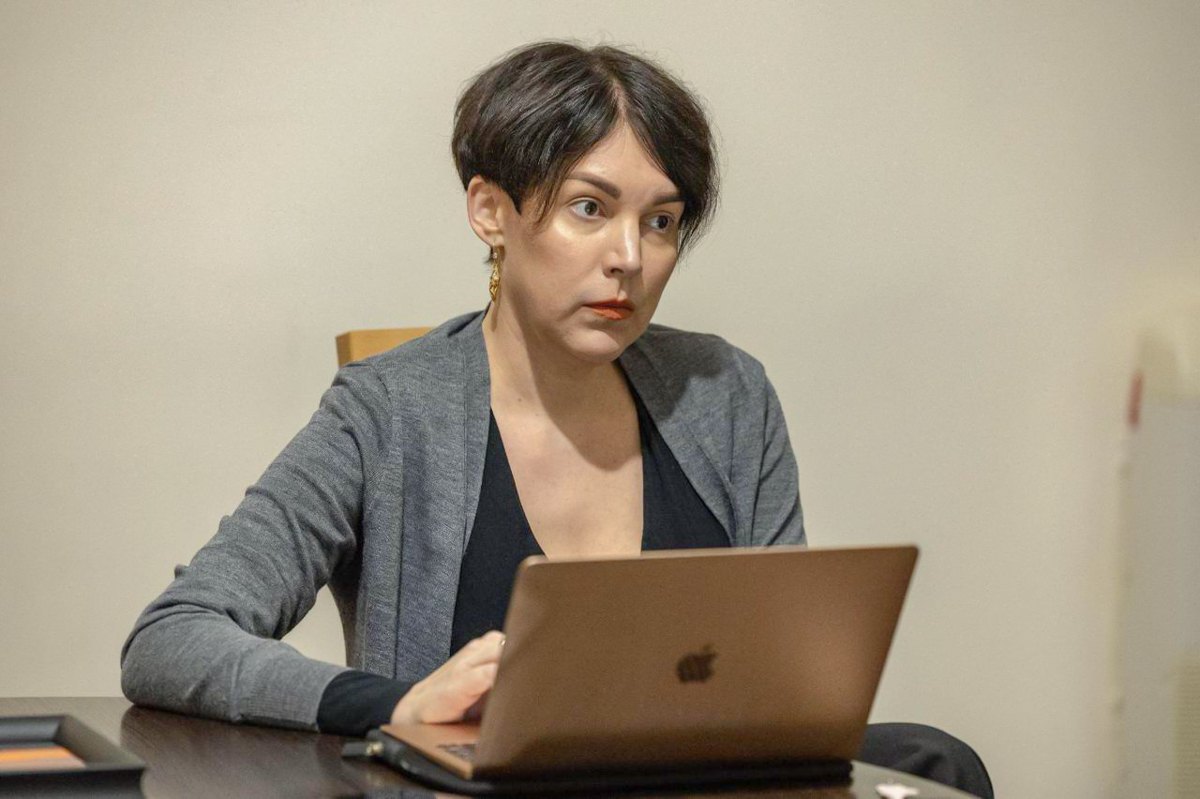
What do you mean!?! Why?
On the eve of the offensive, I literally visited all the units and companies, met with the soldiers and told everyone why we were going there and why we were here.
Because there were even commanders who asked if it was legal.
So they attacked us - that's legal, but it's illegal for us to cross the state border into enemy territory when there's a war going on? This is absurd!
At the front, the moral and psychological state is of great importance. When everyone is retreating, they are depressed, they don't believe in anything, that it is possible to advance, that it is possible to defeat the enemy. But when we advance, there is a change in consciousness, in the moral and psychological state, and this motivates not only the troops who are advancing, but everyone. Because it turns out that the enemy is not like that, and you see, in one day we have advanced 12 kilometres, defeated all border units, and crossed the border strip.
By the way, the strip along the border was very heavily fortified. We were able to make holes in their barriers only around 12 noon.
This problem exists in some other areas as well. Imagine overcoming two anti-tank ditches, each up to three to four metres deep and wide. All the tetrahedrons (anti-tank barriers, also called ‘dragon's teeth’ - S.K.) are connected by a metal cable, and in some areas they are also mined. Engineering equipment begins to pull them down, and then anti-tank mines are detonated.
And then there are the drones. We were very lucky that the enemy did not have fibre-optic drones at that time (they were just starting to appear). This became a big problem for us later. At that time, we had a superior number of drones, and we managed to coordinate UAV units with the assault units.
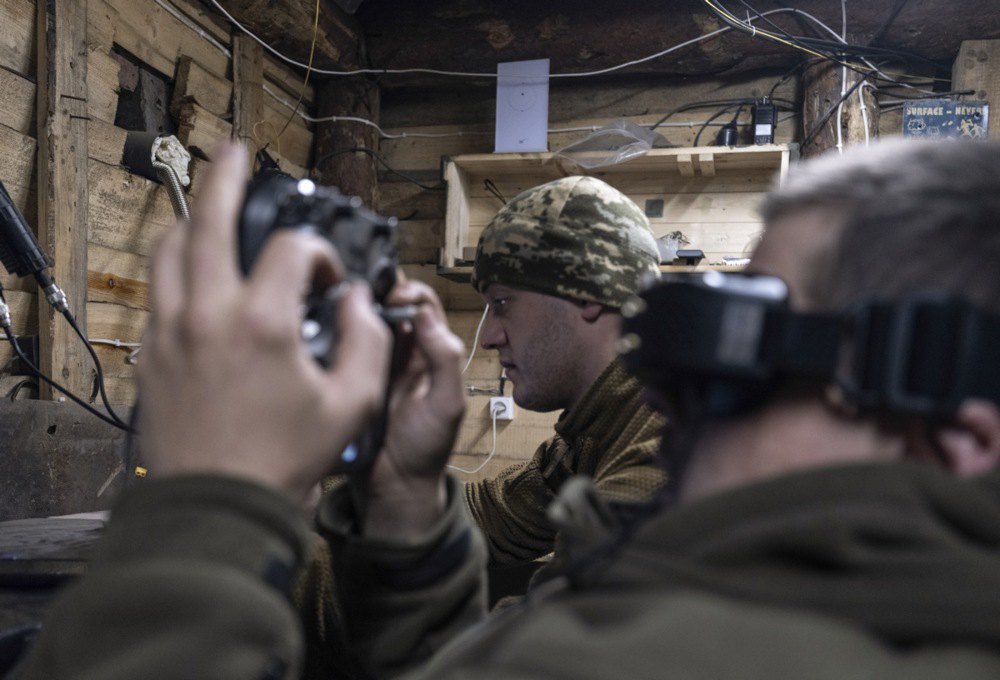
By the way, that was the first time assault battalions made their mark. They proved to be highly effective. Remember, there was a thesis that only those brigades that had traditions and experience, that had fought, should be manned, and these units were formed from scratch. Some of the commanders were not even career officers.
And they went ahead, went first, made passages together with engineers, broke through the defence. They went as advanced units in front of our airborne brigades.
‘In a month or two or three, we will be able to significantly increase the number of fibre-optic FPVs, which will practically deprive the enemy of the advantages they have now.’
In your address on the occasion of your one-year anniversary as Commander-in-Chief, you wrote that one of your priorities is ‘non-standard actions, not just defence’. Of course, we shouldn't reveal our plans to the enemy, but do we have the capabilities to be ‘not just defensive’ now? Given the offensive in the Sumy and Kharkiv regions, I mean. After all, the enemy has clearly drawn conclusions from the Kursk Region. The Sumy region is being ironed with KABs, and we can't actually do anything about it.
Firstly, every action has a counter-action. If they use their KABs, we must also use our GBUs, our guided bombs. And we are using these weapons and increasing their scale. By the way, our Air Force is doing these very sensitive strikes for the enemy, and they are suffering losses.
Our guidance systems are much better than the enemy's. We have a sufficient number of electronic warfare systems that act on the control system of enemy KABs. It was flying in one direction, and then for some reason it flew in another. The control system and the fight against electronic warfare is a constant competition, as is the competition between drones and electronic warfare.
Secondly, it is clear that active operations, active defence, and counter-offensive actions remain. They are being carried out, and each time they prove to be effective. Even in these conditions, bold, decisive actions, including in enemy territory, lead to the fact that we disrupt all their plans.
Next. The technological component. With regard to drones, improving their performance, increasing their range, we have also started receiving fibre-optic drones with a 20 km cable, which basically equals our chances with the enemy.
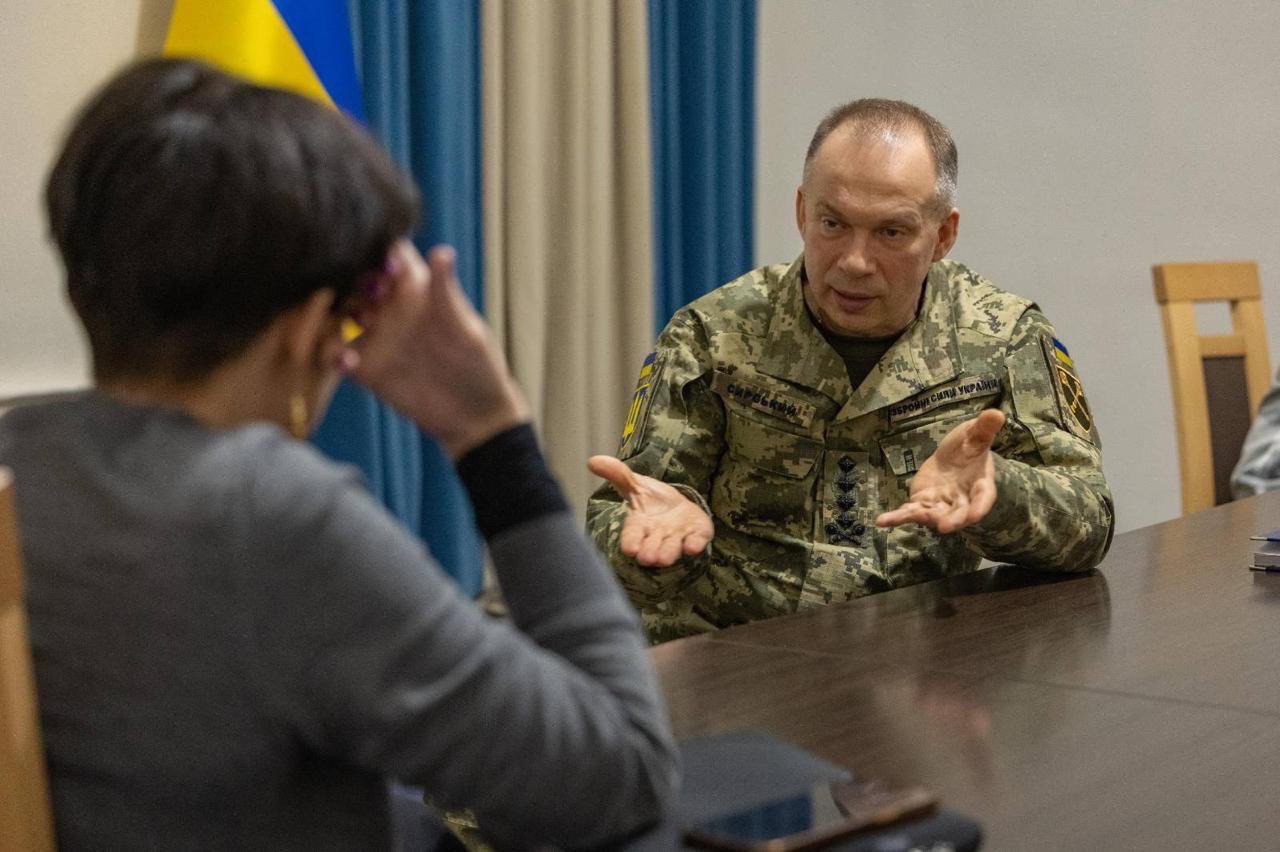
And, of course, we need to increase the number of ground drones. They are now being produced in large numbers. Remotely piloted modules. All of them have elements of artificial intelligence, meaning they can detect targets on their own, identify them, and can fire automatically or semi-automatically.
Many believe that this is the future.
Well, of course, this is already actually happening, as we once saw in Star Wars.
You mentioned the destruction of the enemy's plans. It is known that the campaign in Kursk Region disrupted the offensive in Sumy and Kharkiv regions. Perhaps there is something else that can be discovered?
The fact is that some actions like silence. And we don't talk about them because we want to hide something, it's just to save the lives of our people. But we do carry out such actions. I think time will pass and everyone will learn about them.
You said that the strikes on Russian arsenals have halved the use of artillery shells. What other impact do our strikes on targets deep in enemy territory have on the course of hostilities?
I have already said that the amount of ammunition has decreased. We managed to destroy several storage and assembly sites of the Shaheds, which also affected the total number of their use.
We launched a number of successful strikes on airfields, and the enemy was forced to deploy its aircraft deeper into Russia. If earlier it was at a distance of 100-150 km, now it is 200-300 km - Engels, Shaikovka.
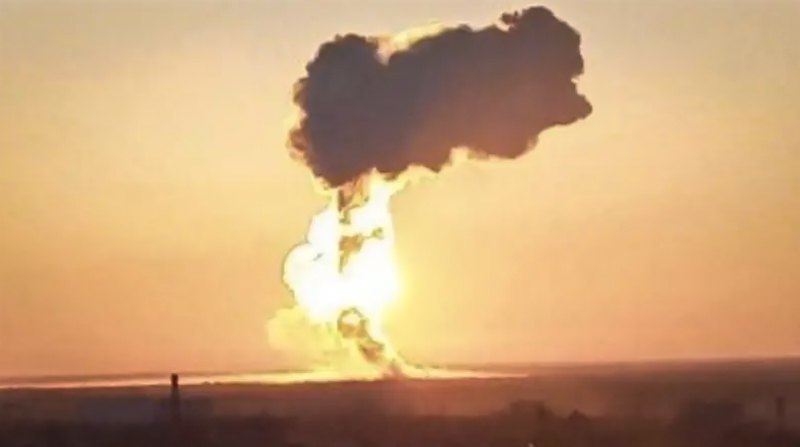
A few days ago, our successful actions destroyed a Tu-22M3 long-range bomber. It had just landed and our drone hit it. The cost is about $100 million.
The Russian fleet is virtually locked in Novorossiysk. Sometimes it breaks through, but it's a test for them because they know they are constantly under threat from our strikes.
The air defence system is also one of the areas targeted during the ‘diplomatic strike’, which significantly reduces the capacity of both the air defence system itself and the system for detecting our air attack assets. Each such station costs tens of millions of dollars.
Payments for injuries: ‘It's not about money, it's about procedures’
In the same annual address, you wrote: ‘About 70,000 servicemen have been sent to the combat zone as a result of the reduction (downsizing) of the number of security, maintenance and support units. However, people from air defence, electronic warfare and combat aviation units were also transferred to combat brigades. It is clear that there is a shortage of people at the front, but is it worth sacrificing narrow specialists who are valuable to the Defence Forces? Are you satisfied with this rotation?
The work continues. We have plans, calculations have been made, and we continue to transfer people from rear to combat units, differentially. Remember the story with the pilots and engineers - we take into account the specifics. Usually, the transfer concerns security and logistics units. And there are also restrictions in logistics, when, for example, those who transport ammunition or fuel have the appropriate clearances. And if we do transfer them to brigades, they will be assigned to the same specialities as they performed in logistics units.
In short, this process is ongoing. This is one of the sources of recruitment.
Does it pay off?
Of course, it justifies itself.

The President announced the figure he announced. And this is indeed the figure we must stick to.
The enemy is increasing the number of its Armed Forces by eight to nine thousand every month thanks to contract soldiers. In some regions, the cost of a contract reaches $40,000. And money is always an incentive for them.
We know that 12,000 people from North Korea have joined the Russian army. Some of them have been eliminated in various ways. What is their number now, and how does this affect the course of hostilities?
Koreans are coming. There have been at least two waves of training and replenishment. They were actively used in the battles in the Kursk Region, forming the basis of the offensive groups. They suffered significant losses because they were attacking and using old Soviet tactics.
Now we are seeing improvements in their training, weapons and equipment. They have actually adopted the standards of the Russian army. And they continue to use them.
And we don't see how this can be stopped?
Stop it? Only physically.
It is known that about six million men have not updated their data in the TRC. Accordingly, they avoid mobilisation. Do you have a vision of how to attract them to the army?
First of all, we need digitalisation. When the process is digitised, we will know all our citizens and where they are.
What part of the need for mobilisation is covered by recruitment?
In general, all figures related to mobilisation are confidential. I know all the figures, how many people came through recruitment this month, how many last month, but everything related to mobilisation is confidential. If you say one number, they (the enemy - S.K.) will quickly calculate it.

Let's put it this way: how effective is the recruitment system?
It is gaining its capabilities. Various projects have been launched. It is possible to sign a contract or choose the unit you want to serve in. That is, the system is as flexible as possible. We use all acceptable forms that ensure the involvement of our citizens in military service.
On 11 February, the Ministry of Defence presented the terms of contract for 18- to 24-year-old volunteers, including a payment of UAH 1 million and a cash allowance of UAH 120,000. The initiatives provoked a mixed reaction.
Sceptics say that it is not fair to those already in the ranks of the Defence Forces: people in the same units will receive different salaries for the same tasks. And why should experienced soldiers, who are holding the frontline, be paid less than inexperienced recruits? Volunteers or mobilised soldiers who enlisted in 2022 or 2023 have no chance of demobilisation, but 18-24-year-olds can be demobilised after a year of contract.
Moreover, guys of this age who were mobilised earlier did not receive such payments. The President promised to revise this mechanism somehow. Is there any progress in this direction?
Yes, we are constantly working, including to eliminate all those negative aspects.
When will there be a result and what do you think it should look like?
If I say that now, you won't believe me. I think in the near future, within a month or two. This campaign has actually just started, it is gaining momentum.
Are the guys already using this option?
Yes, they are. And in order to provide maximum opportunities, remember that six teams were initially identified during the experiment, and now 10 more have been added. We are considering all forms and methods, discussing these issues at the Staff meeting to maximise the involvement of those who can fight, and those who have limitations to use their capabilities where they can show them, for example, in anti-aircraft units fighting drones, in mobile groups.
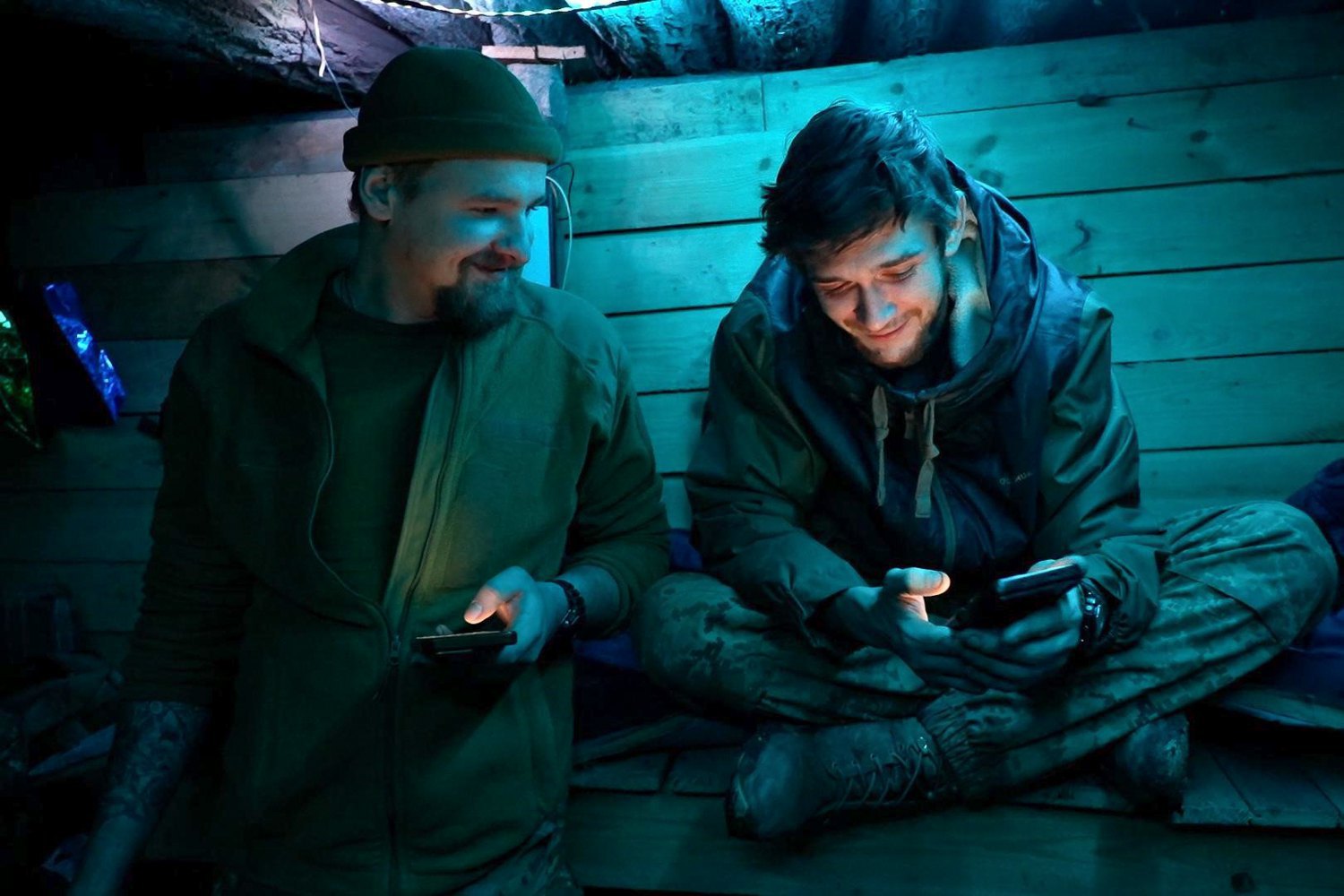
Has the situation improved after criminal punishment for AWOL was postponed if soldiers return to the front?
The military is mostly at war. We are, of course, joining this campaign, but this is rather a question for the Ministry of Defence.
Many of the soldiers we spoke to say that the Defence Forces have problems with payments for injuries and deaths. People often have to go to court to get the payments they are due. At the same time, the state has found money to encourage young people. This also does not contribute to a sense of justice.
Problems with the payment of funds for injuries mainly lie in the bureaucratic plane.
The issue is that in order to be paid, one must provide relevant documents confirming the circumstances of the injury, the severity of the injury or trauma, and the person must undergo treatment and rehabilitation, which must also be confirmed by relevant certificates. Although, of course, the list of these documents is significantly reduced.
In order to simplify this process as much as possible, we have introduced a vertical social support service (patronage service), starting with the brigades and ending with the General Staff. And at least the number of such appeals has significantly decreased. I believe that this project has shown its effectiveness.
Therefore, the issue here is not money, the issue is procedures.
‘Much more soldiers with AWOL have started to return, and they are fighting well’
The problem with AWOL. Has the situation improved after criminal punishment for AWOL was postponed if soldiers return to the front?
Yes, the situation has changed. Many more soldiers have started to return, and many of them are fighting very well and showing good results.
Some units are almost half staffed by those soldiers who left their units without permission.
How many have returned?
Well, thousands.
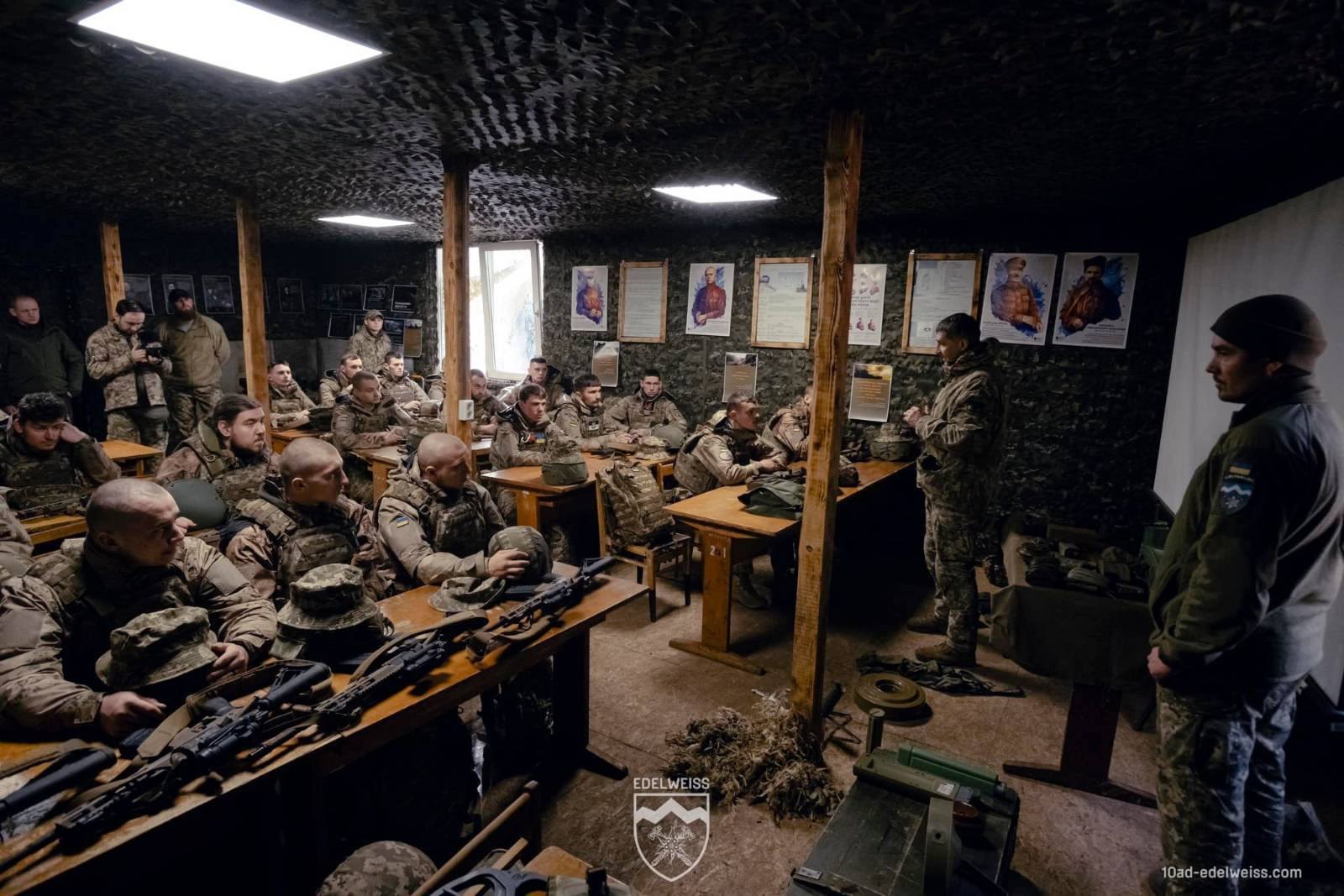
The (apparently) insufficient level of mobilisation causes two other systemic problems that affect the morale and combat capability of the military: the prolonged absence of rotations and the lack of prospects for demobilisation. The Cabinet of Ministers was supposed to submit a draft law on demobilisation by 18 December 2024, but failed to do so.
The Ministry of Defence is currently working on several very strange versions of the bill, which would provide for the possibility of long-term rotations or treatment for the military for a period of three to five months.
Rotations are being carried out. In fact, when I started my work as commander-in-chief, we immediately started to withdraw brigades to restore combat capability. In fact, the seven brigades that thwarted the offensive in the Kharkiv Region were just withdrawn for rotation. Before that, there were no rotations.
But I want to say that the frontline is constantly growing. The Kursk operation and the enemy's actions in the Kharkiv Region, in Vovchansk, have given us a 200-kilometre extension of the frontline. And the enemy has increased its grouping fivefold since the beginning of the aggression. Every month they increase by eight to nine thousand, and in a year it amounts to 120-130 thousand. On 1 January 2025, Russia's grouping of troops involved in the fighting in Ukraine numbered 603,000, and today it is 623,000.
Imagine if they are paid 20-40 thousand dollars for signing a contract alone, I'm not taking into account all the other salary payments, and a soldier receives from 2,500 dollars. That is, they throw money at people, and this is the main incentive. We cannot afford it.
If we take the enemy's trained mobilisation resource - those who have done military service and military training - it is about 5 million people. The total mobilisation resource is 20 million. Imagine their potential. What can we do in these circumstances? Of course, mobilisation and transfer.
The issue of rotations will always be on the agenda. Because the frontline is growing, the war can last for years...
In conditions when we cannot carry out a full rotation... And we cannot carry out a full rotation because we are returning to the issue of mobilisation, but we will not go into it because it is quite sensitive. Brigades and companies have schedules, people are released. Still, some units of brigades are in the second echelon, so people are released.
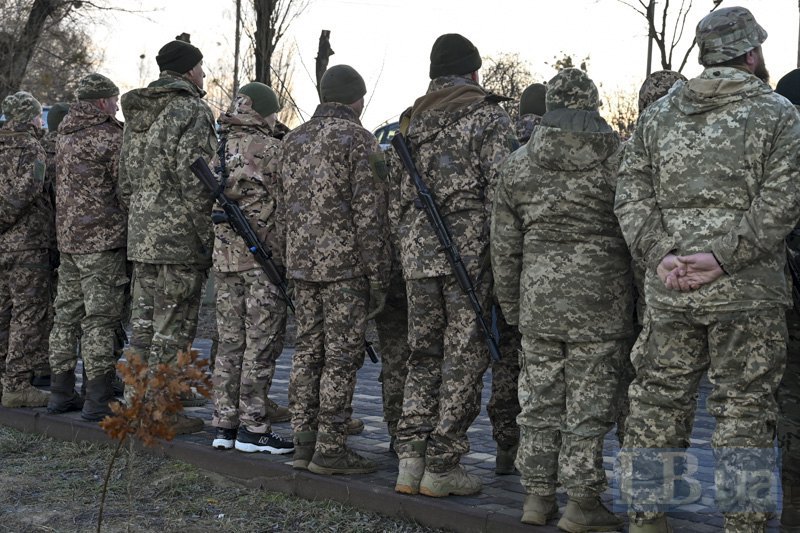
Along with the issue of rotation, demobilisation is also being actively discussed. One of the ideas is to release those who have been serving since 2022. It is clear that this is not fully realistic. But assuming this, how many people have been at the front since the full-scale invasion?
A lot of people. Remember, when the Verkhovna Rada raised the issue last year of including demobilisation in the law on mobilisation and allowing those who had served for three years to demobilise, we estimated that in April this year, out of the entire number of troops we had at the front, about 350,000 would have quit immediately.
In fact, we would have lost a third of the army.
On the change of commanders: ‘We can't keep someone who just throws his soldiers into battle where they die’
In the course of preparing for the interview, we often heard from commanders of various levels that there is a big problem with the quality of training of mobilised soldiers in training centres. Also, analysts at the Centre for Initiatives Come Back Alive have been researching the problems of the Army training centres for several months, and the results show that the training programme does not correspond to the realities of war. This also applies to those who were trained abroad. And the insufficient level of training affects our losses on the battlefield.
Among your achievements, you mentioned an increase in the duration of training from one month to one and a half. But this does not seem to have affected the quality. And is a month and a half enough time for training?
Training is a priority for us. The increase in the duration of training, of course, has affected the quality. But in general, it does not last a month and a half, but actually longer if you take the full cycle, without force majeure.
A month and a half is compulsory training at the training centre. After that, the serviceman is assigned to a unit and undergoes an adaptive course there: he is directly trained to act in this particular brigade, with this weapon, in this area, against a specific enemy.
But it depends on the unit.
Yes. This adaptive course lasts at least five days, and two weeks in total. That is, the entire training takes two months in total.
We pay maximum attention to this area, and my new deputy, Brigadier General Oleh Apostol (his brigade was distinguished by the fact that it was well prepared, and he has an innovative approach to personnel training), is now working on this.
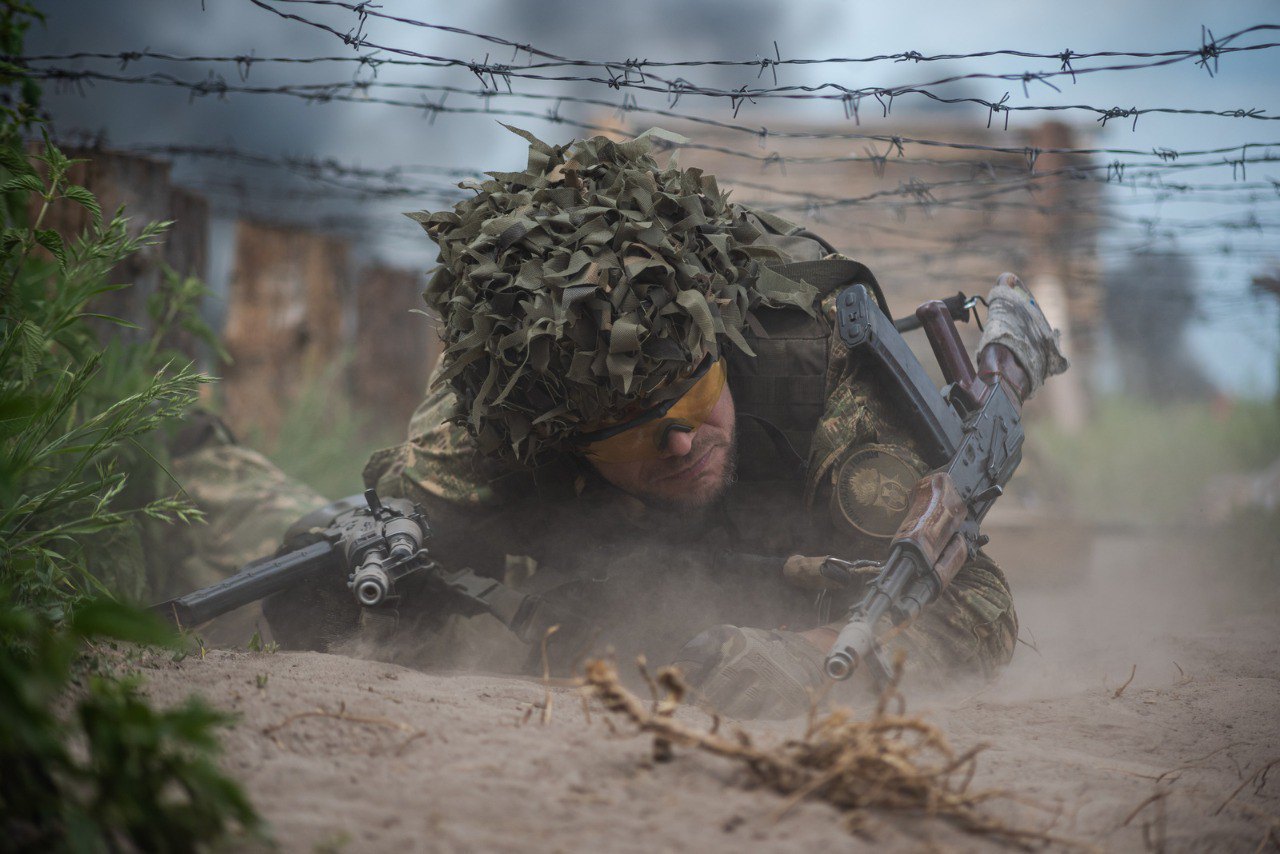
This is a priority issue that I personally keep under control. I hold monthly meetings where we summarise the results of the implementation of the tasks that were adopted on the proposals of commanders and combat training commanders.
We currently have two important issues that I am not only dealing with, but have made a priority of - drones, i.e. unmanned units, the unmanned component and combat training.
We hold these meetings via closed video conferencing. They include speakers from the instructor who is training to the commander or brigade commander or head of the training centre. They talk about problems or about completing tasks or projects that are currently relevant.
We focus on the technical component, on safety during training, because you know that there have been ballistic missile attacks. That is why we have everything buried in the ground and dispersed as much as possible. And we are conducting the training process in the field as much as possible.
I have asked our partners, and at all international meetings I have asked them not to send our brigades abroad for training, but to send us instructors or train our instructors abroad. And all the money saved should be invested in the development of our initial base. Because, firstly, we would have saved at least a month on all those trips. And secondly, you remember what happened with the two brigades. (We are talking about the 153rd and 155th brigades, which were trained in Germany and France. They got into a scandal because of problems with organisation, inadequate management and provision. - S. K.)
Your critics accuse you of frequently changing brigade commanders, including because they are unwilling to perform unrealistic tasks. This is how, for example, Colonel Emil Ishkulov's subordinates explained his removal from the post of commander of the 80th Air Assault Brigade. Yuriy Butusov, one of your most active critics, said that there are brigades where commanders have been replaced six times.
Indeed, commanders are replaced when the brigade fails to perform combat missions and does not hold territory. And the main criterion is when the commander has heavy losses in personnel. This is the main criterion by which the commander's performance is assessed.
We cannot keep a commander who simply throws his soldiers into battle and lets them die.
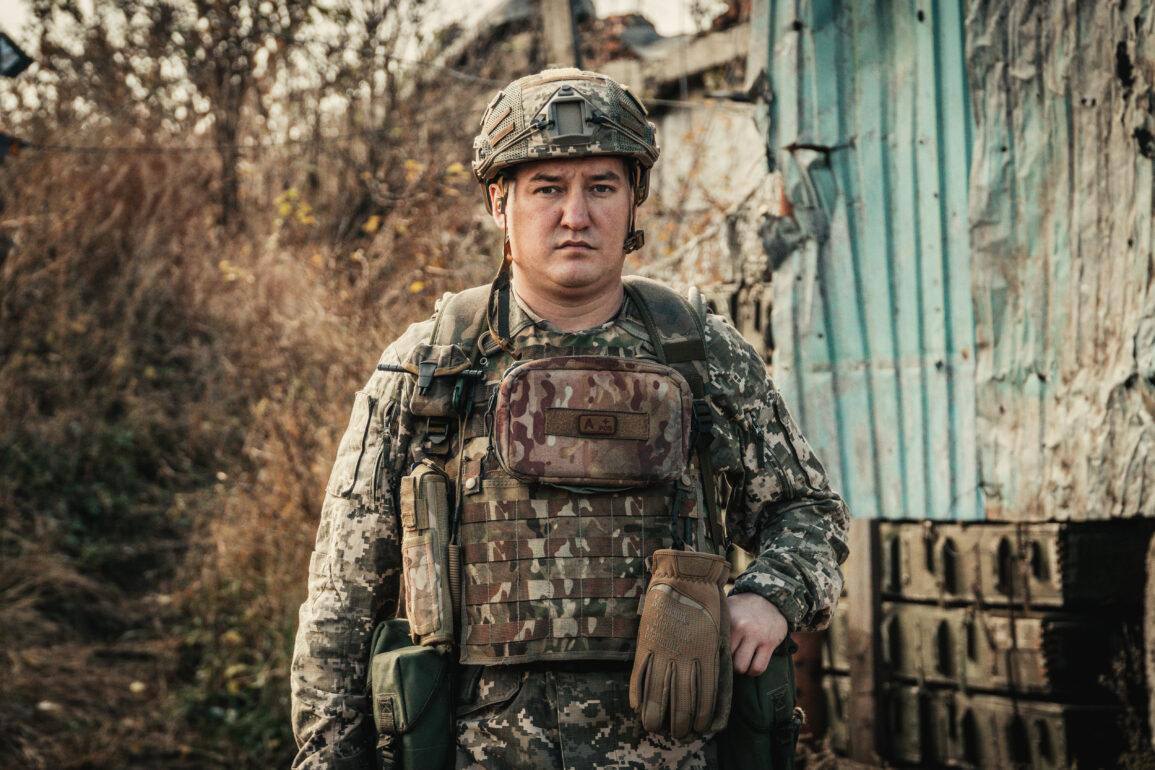
Was there such a story with Ishkulov?
There was a different story there. But let's not talk about it now.
Yes, there are other problems. Many lower and middle-level commanders publicly talk about the problem of fictitious reporting. Commanders conceal the number of people who have left for the AWOL, other problems of their units, and hide failures, so the tasks they are given often do not correspond to their combat capabilities. For example, the headquarters may believe that it operates with a hundred soldiers in a particular area of the frontline, but there may be thirty of them on the ground, half of whom are lightly wounded.
Well, this is true. And this is probably our main problem.
And what should we do about it?!
Well, firstly, we need to check the availability of personnel.
Do you understand what the problem is? Why do they show more people on the front line, but in reality there are fewer of them? Well, not all of them, some of them. In order to be able to fraudulently use these people. You know how much soldiers get paid at the front line and how they can make money. That is, to show that he is here, but he is actually somewhere else. And this is one of the areas in which we are constantly working. I'm not going to give you the numbers, but this is a problem.
This issue of concealing problems is likely linked to the case of Brigadier General Yuriy Halushkin (former commander of the operational-tactical group Kharkiv), Lieutenant General Artur Horbenko (commander of the 125th Separate Territorial Defence Brigade), and Colonel Illya Lapin (commander of the 415th Separate Rifle Battalion of the 23rd Separate Mechanised Brigade). Halushkin was accused of “assigning defensive positions to the 125th Territorial Defence Brigade that did not correspond to its combat capabilities.” In your opinion, is it appropriate to bring accusations regarding certain decisions in combat command or defence organisation, and could this be harmful during a major war?
The situation here is very complicated. Because every soldier and every commander is responsible for their actions. If you receive a combat order, you are obliged to execute it. Failure to execute a combat order is a crime.
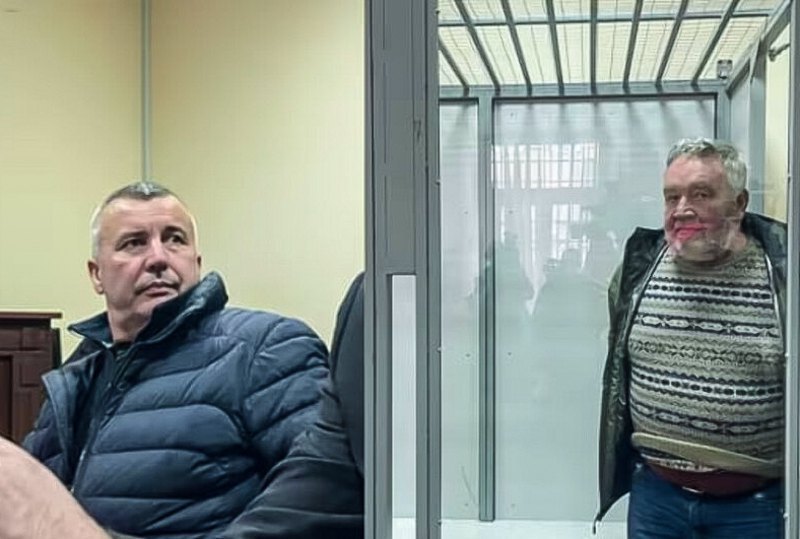
And when they set tasks, for example, to carry out mining, set up minefields, install engineering equipment, set up mine or non-explosive barriers, equip positions, check the organisation of the fire system, that is, to go. Especially in the direction where we already knew that the enemy would attack. The commander of this group received the task from me and reported to me. He reported to me orally. And then he also provided written reports that the task, the combat order, had been completed. That is, it was checked, organised, set up, mined, the system of engineering barriers was built up, etc.
And when you violate or fail to perform an action and report that you have done it, but in fact you have not done it, of course, you have to be held accountable.
Directly during martial law?
There is the concept of a war crime. It's just that the issue is complicated and sensitive when there are hostilities. Because our actions still depend on the actions of the enemy. And we can't always predict how they will act. And to what extent the scope of work performed can adequately respond to the enemy's actions.
Because the enemy is also thinking about how to break us, how to get around us, how to find weaknesses in our defence.
But this process is complicated, because you know, there are situations when the military is exempt from liability for the period of hostilities under immunity. Where is the line between immunity and failure to comply with a combat order - this is precisely the responsibility of law enforcement agencies and the State Bureau of Investigation.
Does the military prosecutor's office need to be restored?
Of course it should. Because those people deal with purely war crimes and the military, then this process, firstly, does not cause such a resonance in society. And secondly, it is more, let's say, professional, because they are narrow specialists.
Do you know how many officers are currently under investigation for their actions or decisions during the war?
I don't know exactly. I just don't have time for this.
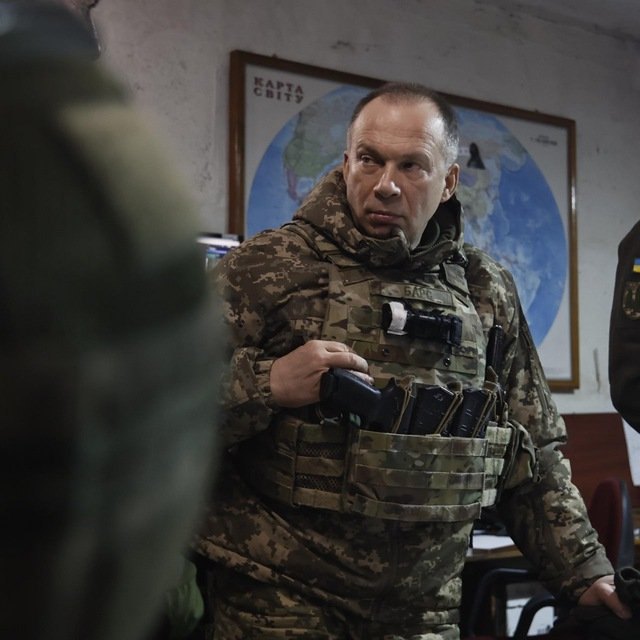
On the peacekeeping contingent: ‘For a certain period, of course, it will stabilise the situation. But it is hard to say for how long’
Last summer, Roman Kostenko, secretary of the Verkhovna Rada Committee on National Security, Defence and Intelligence and a member of the Temporary Investigation Commission on the procurement of drones and the construction of fortifications, said that Ukraine often built fortifications in places where it was impossible to hold the line. Is the situation better in the border areas where we can expect a new offensive?
We know that there are defence lines for which the local authorities are responsible, and for which the military is responsible. But videos from the positions sometimes show that they are often not equipped in the best way: there are no proper trenches, no communication routes. 105 mm guns are simply covered with drone nets. The enemy sees this, and so does society.
Everything that concerns the defensive lines in the depths is the responsibility of the local authorities. Positions in the supply line or on the front line, where there is a direct line of contact, are, of course, the responsibility of the military. Because all that territory is affected by all types of weapons. Of course, we cannot talk about any classic fortifications here. They can be built in advance, in peacetime.
You remember from history, there was the Maginot Line, the Mannerheim Line, but these were all built on the borders in peacetime. Back then, there were really powerful fortifications. But how can you build something if, for example, everything is shot through with artillery fire to a depth of five kilometres and completely destroyed by drones? There can only be field fortifications dug by the soldiers themselves with BSL-110 shovels or sapper shovels.
In an interview with 1+1, you told us how in 2022, after a conversation with Valeriy Zaluzhnyy, you took over the preparation of Kyiv's defence, even though you did not want to believe in a major invasion, but understood that you had to prepare for the worst. And the defence was built, in particular, along the lines of the Second World War. Why am I mentioning this now? Can we conclude here that the Armed Forces did not have a clear plan to prepare for repelling the invasion? And how should we assess the actions of those who did prepare at their own risk?
The conversation with Zaluzhnyy took place about two weeks - ten days before the invasion. About four days later, I turned to him and told him that we had basically done everything: we had conducted a reconnaissance, taken out the soldiers, figured out the borders and how we would build the defence. We need to move the equipment out. He said he could not give such an order. So I started moving the equipment out at my own risk.
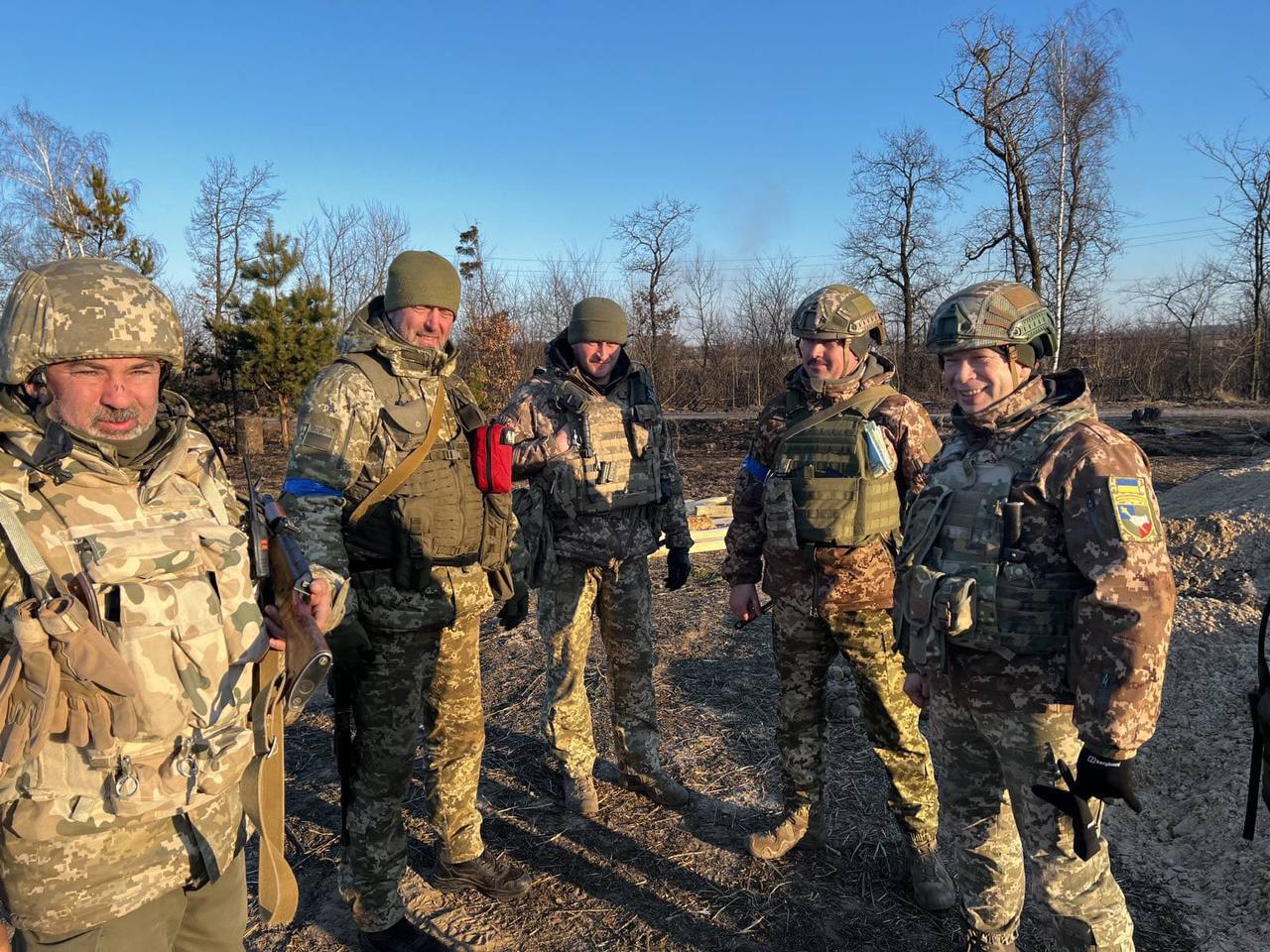
When the exercises in Belarus continued, it became clear that this was an already established offensive group. When their Smerch, Grad, Uragan and long-range systems were deployed along the state border, it became clear that the artillery had moved to the original areas. What else could they do there? It became clear that there would be a war. No matter how much we didn't want to believe it, we had to do everything we could so that if the enemy attacked, we could repel it.
The Defence Intelligence of Ukraine provided information that the enemy would attack in eight or nine groups, and they would try to surround Kyiv. I said that it was impossible to surround such a metropolis with nine battalions. Most likely, based on this situation, the enemy will act in such a way that it will create a striking fist, and on the two main directions of entry into Kyiv it will try to break through our fortifications and positions. In order to reach the government quarter via the main wide roads, capture the government quarter, capture the state leadership, and thereby, in principle, put an end to the war.
This is quite understandable. What could be done with such a large number? To seize the entrances and approaches to the city and ensure the advance of their sabotage groups or special forces.
And in the end, it became clear that my assessment was correct. The groups that were destroyed, they had large photo diagrams of the city, they all had marked routes, and they went right to the government quarter, each had squares, numbers, who had to go out directly in the government quarter and what to seize.
Didn't your colleagues tell you not to panic, why are you scaring everyone?
No, no one said that to me at all.
The staff of the Land Forces Command was with me before the war, and they are still fighting with me, although I remained in the Land Forces. But they work with me at the command posts.
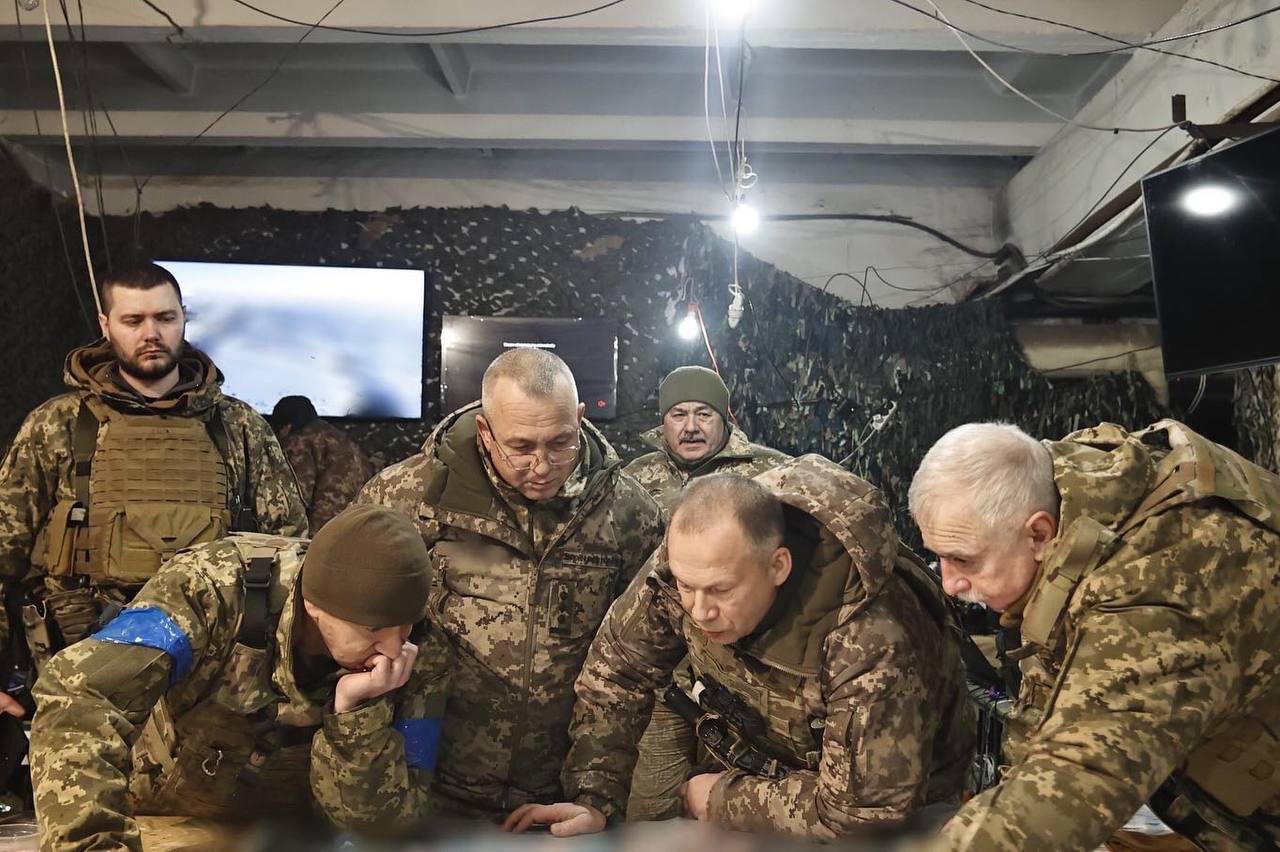
In a high-profile interview, General Nayev stated that ‘the military did not have a single document stating that Russia would launch an offensive on 24 February 2022’. Is this really true?
What kind of document could there be? It's real. Who knows when there will be a war? If there is some kind of plan, then yes.
Nayev's position is that he is an executor. He was given a command, and he executes it. But everyone has their own intelligence. Every commander has to anticipate the enemy's actions. And when he sees the signs, especially when it comes to aggression, it is clear that he must take appropriate and adequate measures to prevent this aggression from happening.
And if he did start this aggression, how many exercises and simulated situations have been conducted. Everyone knew the algorithms of action.
There was a special specificity for Kyiv, because the operational command West was responsible for the defence of Kyiv. But when we talked to Zaluzhnyy, he asked who was responsible for the defence of Kyiv. ‘Litvinov,’ I said (the commander of the troops of the Operational Command West - S.K.). But it was clear that he would not be able to provide it, because there are specifics.
In general, until 2019, the Land Forces Command was responsible for the defence of Kyiv, then a new leader came in and said that everything would be like in NATO - all the command and control bodies would be engaged only in training, development, and generation.
In the end, I offered to be responsible for the defence of Kyiv, because it is, of course, a separate area.
In retrospect, could you have been better prepared?
Everyone hoped and there were statements that there would be no war...
There are a lot of myths circulating in Ukrainian society about the outbreak of the great war: whether Chongar was cleared of mines, why the enemy advanced so quickly in the south, why only the 72nd Brigade covered Kyiv Region, and not in full strength, why only conscripts of the NGU Brigade were in Hostomel, what happened in Zhulyany. When do you think society will get answers to all these questions?
The war will end, and I think society will try to get these answers.
In his book War, American investigative journalist Bob Woodward claims that the Russians threatened the US with the use of nuclear weapons if the Defence Forces destroyed the main enemy forces during their retreat from Kherson in 2022, and Washington put pressure on the Ukrainian leadership. Was this really the case, and how often have our partners asked or ‘recommended’ something in this logic?
I think it's a bit of nonsense.
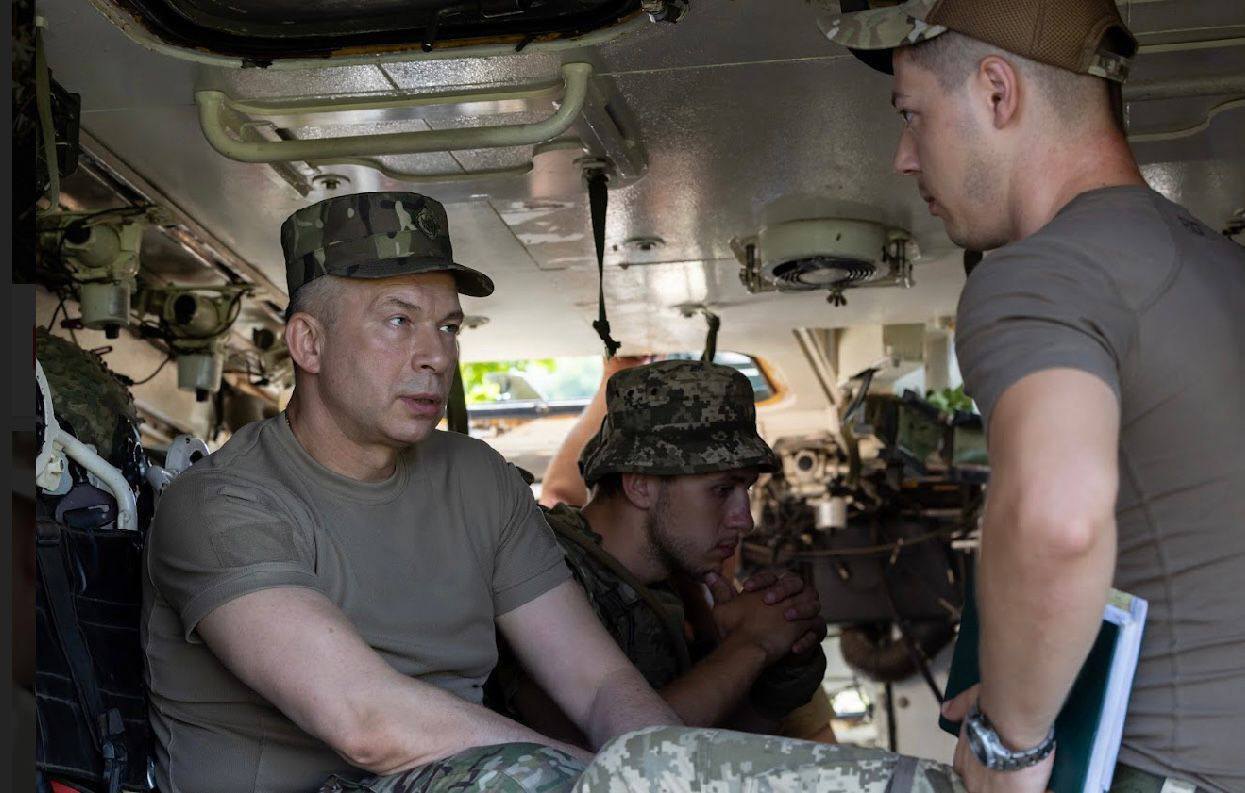
Finally, how realistic do you think is the scenario of deploying a peacekeeping contingent not along the line of combat engagement (LCE), but simply within Ukrainian territory — is this an option being discussed by the so-called “coalition of the willing”? Or, hypothetically, what would be the ideal format of foreign military presence in Ukraine from our perspective?
The presence of troops of a country on the territory of our state is a political issue.
From the military point of view, of course, the presence of a contingent of another country is an additional guarantee of security, because they will ensure that at least the part where these troops are located will not be hit by the enemy. Of course, theoretically, these units will not be on the front line. They will be where the threat level is minimal.
Of course, we support all decisions made by the political leadership. Because they are discussed from a military point of view. And the president never makes such decisions alone.
Will the presence of a peacekeeping contingent be a sufficient security guarantee to prevent the Russians from ever returning?
This is a difficult question. Because the enemy here is like this... You know their plans, and the presence of the contingent disrupts them. And how predictable they will be...
Yes, for a certain period, of course, it will stabilise the situation. But it's hard to say for how long.
This is the last question we have been asking all our top-level interlocutors since 2022. Each of us puts our own meaning into the word ‘victory’. What would be a victory for you personally, the end of the war?
A just peace - when we reach the borders and raise the flags. And this is the maximum goal.
What about a realistic one?
Realistic - when the enemy leaves our territory. I don't know how. Maybe by military means. But we are doing everything we can to make it happen. We can and must do it. We just have to take into account both our capabilities and reality.
I am deeply convinced that there are borders, they are internationally recognised, and we have to stand on them. How will this be done? In a political way? With the help of partners? This is another question.








